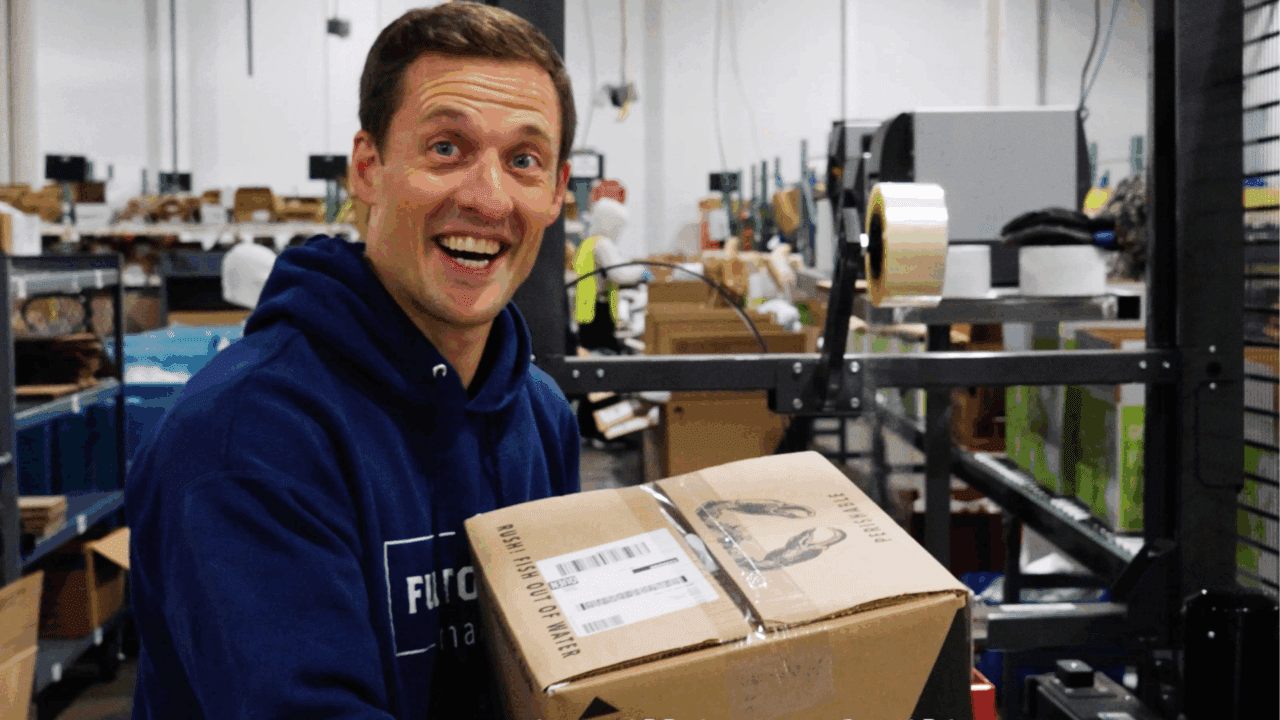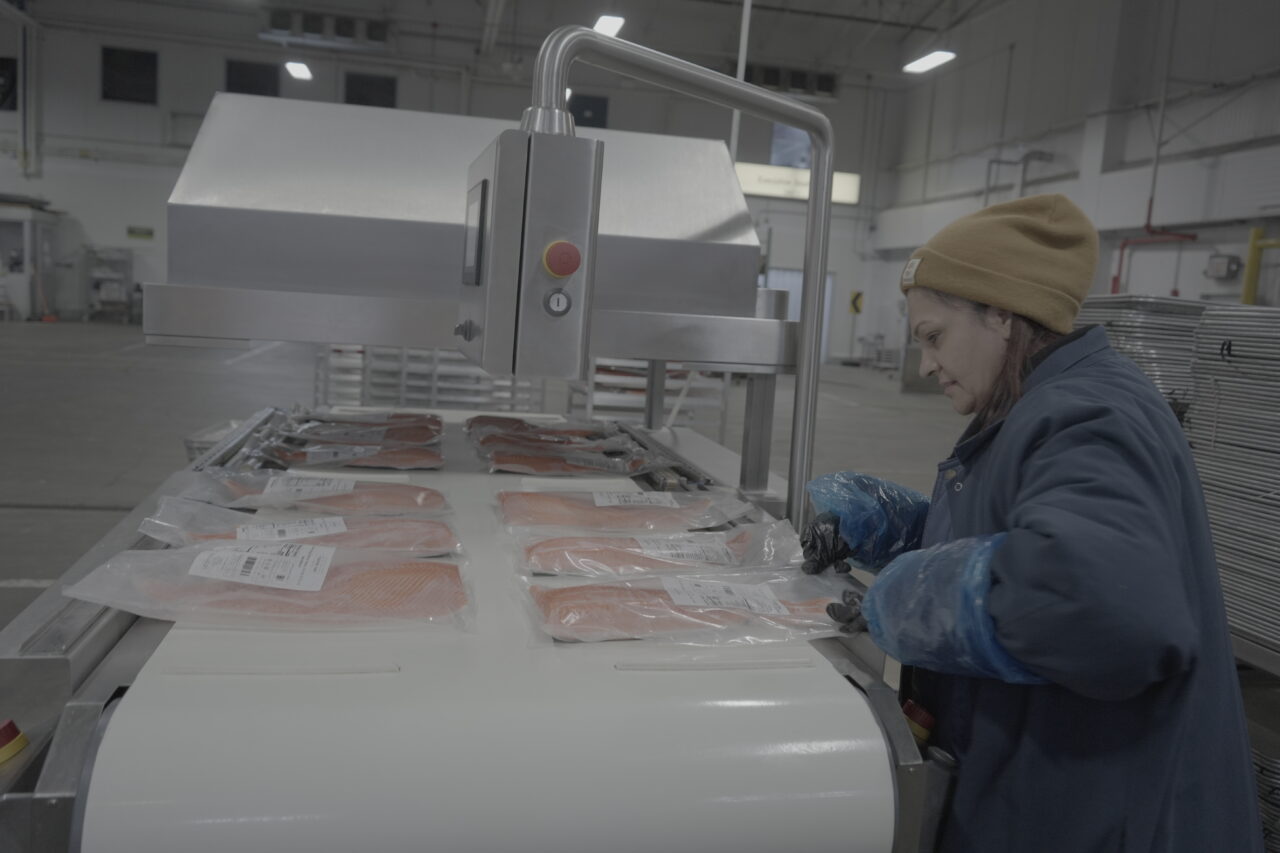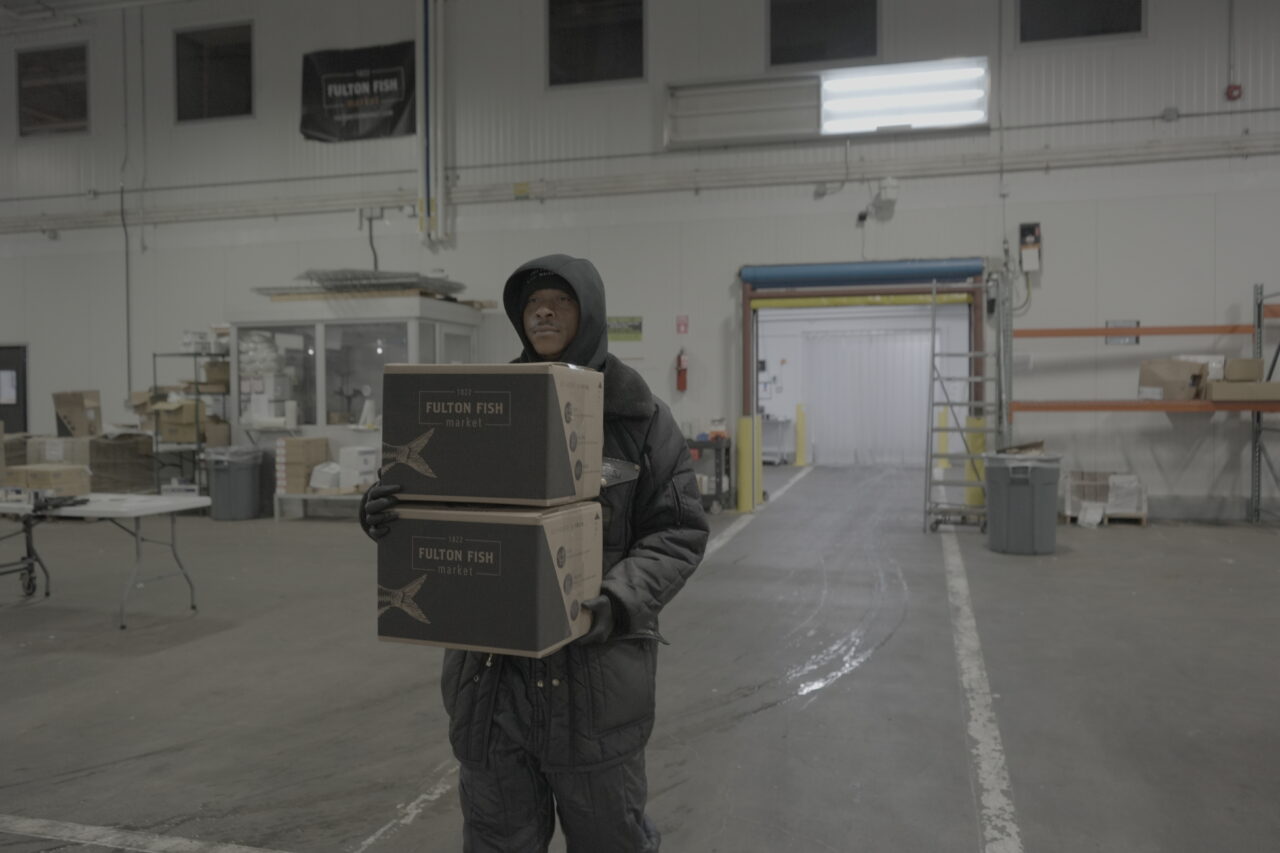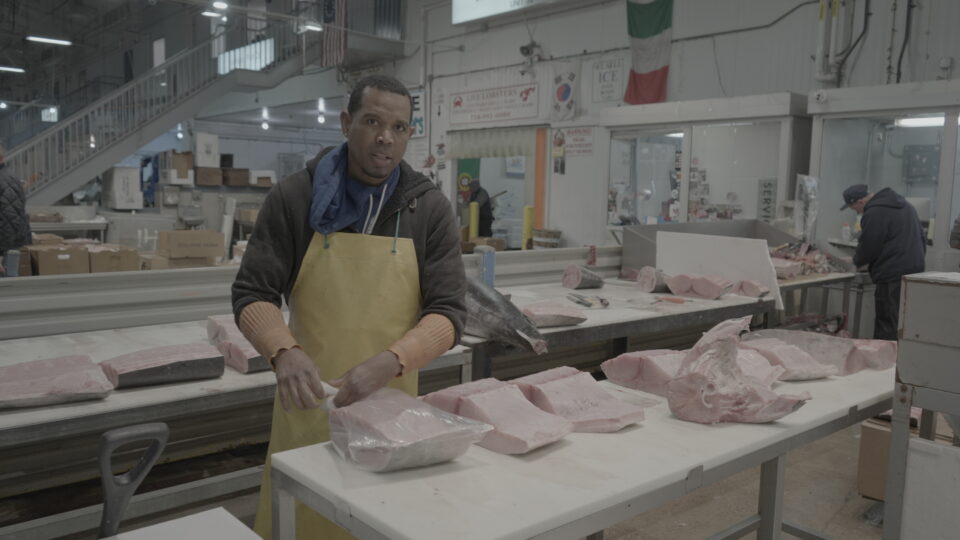For more than two centuries, the Fulton Fish Market has reigned over the East Coast seafood trade, supplying restaurants and local purveyors with aquatic delicacies every morning. The market is primarily for wholesale purchasers (the hours alone dissuade most casual shoppers, who are usually still asleep from 2 a.m. to 7 a.m., when the market runs). But in 2020, the market heeded the insistent call of the internet and launched into ecommerce, making its merchandise readily available to consumers across all 48 contiguous states and Washington, D.C.
The cross-country transportation of fresh fish isn’t an endeavor for the faint of heart, but Fulton Fish Market has persisted and now offers upwards of 40 SKUs for one- and two-day delivery — everything from cod and salmon to fresh oysters and Arctic char. To pull it off, the market has employed the help of ColdTrack, an experienced navigator in the choppy waters of cold chain logistics.
The market itself is a co-op with 25-30 independent vendors, and its ecommerce arm operates as a separate business entity within that ecosystem, running out of the market’s Hunts Point home base in the Bronx. (Quick side note for those who remember the market in its historic South Street Seaport location — it moved to the more modern, up-borough facility in 2005.)

When the DTC operation launched, FultonFishMarket.com ran everything itself — from sourcing at the market through to delivery, often with its own trucks. “The issue with that is, fulfillment is challenging,” said Mike Tonetti, CEO and COO of FultonFishMarket.com in an interview with Retail TouchPoints. “Figuring out all those mechanics on the fulfillment side of the equation took us away from our true expertise, which is finding great seafood and educating customers about what to look for and how to prepare that seafood. [This partnership allows] us to excel at what we are truly experts in, and have ColdTrack excel at what they’re experts in.”
And excel they have. The partnership has not only saved Tonetti’s sanity but also saved the operation a boatload of money — to the tune of $500 million in annual shipping costs.
The tale of how they’ve done it includes all the ingredients of a Jules Verne saga — advanced technology, battles with the elements, travel across immense distances — and lots and lots of dry ice and gel packs (to be fair, Verne predicted many things, but advances in cold chain logistics weren’t among them). Join us as we follow the journey of a fish from the stalls of the Fulton Market to a customer’s doorstep.
Prologue: A Fish Becomes Food

Every week, the Fulton Fish Market receives 4 to 5 million pounds of fish from all over the world. FultonFishMarket.com purchases what it needs from that stock to fill the DTC orders, and when required, handles the fabrication — butchering a full fish into ready-to-cook portions — then cryogenically freezes those portions for transport. Products that arrive at the market frozen from farther-flung parts of the world, like King Salmon from New Zealand for example, are moved directly to freezers to maintain freshness.
Chapter 1: The Fish Enters the ColdTrack
Once Tonetti’s team collects everything it needs from the market to fulfil online orders, the products are moved to ColdTrack facilities in either New Jersey or California, whichever is closer to the end consumer. Items are scanned in at ColdTrack and stored in FEFO order (first expiration, first out), ensuring that items expiring sooner are pulled into orders first.
Chapter 2: Packing Day
The early morning bustle of the Fulton Fish Market is a magical experience in its own right, but for FultonFishMarket.com, the real magic begins on packing day, when products are pulled from the freezers and readied for shipment.

Part of the power of the ColdTrack system is the scale and expertise it brings to brands through shared storage facilities and shipping carrier contracts. Each brand that works with ColdTrack has its own “packing days.” On Fulton Fish packing days, the cloud-based ColdTrack Live system connects to the FultonFishMarket.com shopping cart to pull down orders and assess which of ColdTrack’s regional warehouses across the country are closest to each end consumer. This will determine where the packed boxes will be routed next.
Inventory is assessed to ensure that everything needed to fulfill that day’s orders is on site, and if not, the system will recommend substitutions and alternatives, which can be implemented automatically based on pre-set rules or routed to Fulton Fish for a decision, depending on how they’ve decided they want to handle these kinds of situations.
From there, ColdTrack Live assesses the “cartonization” needs of each order — what size box is needed and how much cold ice or gel packs will be required, depending on weather conditions on the shipping route and at the end destination. Then all that information is pushed out to the team on the assembly line.

“The beauty of it is that, once the order hits the floor, our team doesn’t need to do any thinking about things like what size box they need, and they scan every item with finger scanners to make sure every item gets into the box,” explained Warner Siebert, Chief Revenue Officer of ColdTrack in an interview with Retail TouchPoints. “They put in the proper amount of dry ice and pack it according to Mike’s standard operating procedures.”
From there the box gets taped up, labeled and routed to a pallet for the appropriate carrier.
“I remember two or three years ago, before we started working with ColdTrack, I would always go in for the holiday season to help pack and stuff like that,” recalled Tonetti. “We would have each order in a little bin, and you’d look at that and be like, ‘Okay, I think this is a medium box or a small box.’ Inevitably, you’d pick a box and you’re in the middle of trying to get everything done before FedEx comes when you realize, ‘Oh crap. I guessed wrong. I’ve got to redo it,” so you’re running across the facility to get another box. I mean, for us to measure every piece of fish and create our own software that estimates what size box to use would have been some ungodly sum of money, time and focus.”
Customers have no idea that Fulton Fish isn’t handling every aspect of the logistics, because ColdTrack is equipped to handle each brand’s specific packing guidelines. “We make sure that it’s the brand’s customer experience that we’re delivering, things like tape or stickers put in exactly the same way,” said Guy Ironi, CEO of ColdTrack, in an interview with Retail TouchPoints.
Chapter 3: The Carrier Fees are Defeated
Now we come to part of the tale with the treasure, specifically, the $500 million in saved shipping fees.
“Shipping seafood can be very costly,” said Tonetti. “If it’s fresh, it has to go overnight; if it’s frozen, it has to go in two days, and the boxes are heavy because you have dry ice and gel packs. Shipping from the Bronx to California can be $80 or $90, since it has to get onto a plane. We could never charge enough to make money on those sorts of orders, so a big piece of the puzzle for us was getting the fish located closer to the end consumer, so we could ship it via the ground network.”

That is what ColdTrack — which has five owned warehouses across the country as well a number of other partners it works with — has brought to equation. Fulton Fish Market could never afford to operate that many regional facilities itself, nor does it have the scale required to get the carrier rates that ColdTrack has, since it handles shipments for a large number of brands.
“We manage 12 or 14 different carrier relationships,” explained Ironi. “When you manage it on your own, no matter how much volume you have, it usually becomes a set of golden handcuffs. You give the volume to the carrier, but you can’t easily shift it away, because then you would lose your [pricing] tier. But because we work with dozens of carriers, we can constantly monitor the health of lines and easily shift volume from one carrier to another with no price impact.”
That is also part of what the ColdTrack Live system determines — which carrier will get each package to the customer in the most cost-effective manner.
Chapter 4: Taming the Weather (and the Seasons)
Another big piece of saving on shipping is optimizing the way products are packed so that they remain frozen but don’t use any excess materials, which involves “weather optimization, ice logic, coolant logic based on temperature in the areas you’re shipping to, cartonization logic — other than putting the wrong thing in the box, the biggest challenge is air in the box,” said Ironi. “Air eats up your dry ice, and the carrier will charge you for volume, so we make sure we run through all these volume-planning considerations. If it’s colder than usual, you take five pounds of dry ice off and save five pounds of dry ice and five pounds from shipping. Those are real cost savings.”
Another big area of optimization for Fulton Fish has been labor management. Like most businesses, the market has its busy seasons. The winter holidays are the biggest, followed by January when people tend to be on a wellness kick, as well as other major holidays throughout the year when shoppers are in the mood to celebrate, like Mother’s and Father’s Day.
“We used to have to triple the size of our team just for a month [to handle peak season],” said Tonetti. “You get these people all trained up, and then, come two weeks into January, there’s not a need for them anymore. Managing those fluctuations in demand just wasn’t really feasible for us from a staffing perspective. Partnering with ColdTrack has solved both the fulfillment network, so getting the product closer to customers, and the fulfillment labor to manage those seasonal fluctuations.”
Epilogue: Fresh Fish at Your Door
The final piece of the puzzle, the delivery, is also managed by ColdTrack Live, which tracks shipments until they arrive. The Fulton Fish customer service team monitors ColdTrack Live each day for shipping and delivery alerts that are passed on to customers, so that they can get that fresh fish into the fridge (or freezer) as soon as it arrives.
FultonFishMarket.com now offers 99.9% packing accuracy and coast-to-coast freshness that rivals that of local catch, and things are looking up, particularly because “there’s a big shift in consumer mindset on frozen,” said Siebert. “I think frozen used to be looked at as something that was cheap, but the way that Mike is taking and processing the fish, it’s technically fresher than fish that’s been sitting out in a display case at Whole Foods that’s probably two or three or four days old. They’re processing it and freezing it at peak freshness.”
And that’s exactly how it arrives at the customer’s door.













